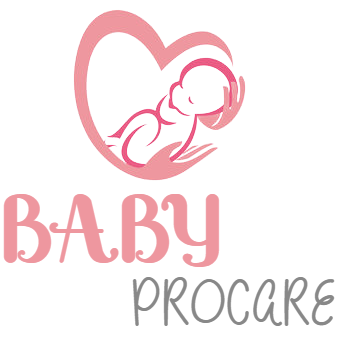As you enter weeks 38 & 39 of pregnancy, the anticipation is undeniable. This phase, known as the late-term period, brings exciting changes that signal labor is just around the corner. Whether it’s your first baby or your fourth, understanding the signs that labor is near can help you feel more prepared and in control.
In this guide, we’ll explore the final physical and emotional signs of labor, when to call your doctor, and practical tips for getting ready to meet your baby.
What Happens in Weeks 38–39 of Pregnancy?
At this stage, your pregnancy is considered “full term,” and your baby is likely to arrive any day now. While only about 5% of babies are born on their due date, most arrive within a week or two before or after. Here’s what’s happening inside your body and how to recognize the final cues of labor.
Physical Signs of Labor Approaching
1. Lightening: Baby Dropping Into Position
Lightening, or when your baby “drops,” typically occurs a few weeks before labor, especially for first-time moms. The baby moves lower into your pelvis to prepare for delivery, which can bring noticeable physical changes.
Signs of Lightening
- Easier breathing: The baby moving lower relieves pressure on your diaphragm, making it easier to breathe.
- Increased pelvic pressure: While breathing improves, you might feel a heaviness or discomfort in your pelvic area.
- Frequent urination: With your baby pressing on your bladder, bathroom trips may become more frequent.
- Changes in walking: Some women notice a “waddle” in their walk due to the added pressure.
2. Cervical Effacement and Dilation
During these weeks, your cervix begins to prepare for birth by softening, thinning (effacing), and opening (dilating). While these changes are often painless, they’re an essential sign that labor is near.
How It Feels
- Spotting or “bloody show”: As your cervix changes, you might see pink or brown-tinged mucus from the release of the mucus plug.
- Mild cramping: Some women feel menstrual-like cramps as the cervix begins to dilate.
What You Should Know
- Effacement and dilation can happen gradually over weeks or suddenly in the hours before labor.
- Your healthcare provider may check your cervix during routine appointments to monitor progress.
3. Stronger and More Regular Contractions
Contractions are one of the hallmark signs of labor. However, distinguishing between Braxton Hicks (“practice contractions”) and true labor contractions can be tricky.
True Labor Contractions vs. Braxton Hicks
| Feature | Braxton Hicks | True Labor |
|---|---|---|
| Timing | Irregular, no set pattern | Regular, with consistent timing |
| Intensity | Mild, doesn’t increase | Gets stronger over time |
| Effect of Movement | Stops with position change | Continues regardless of movement |
What To Do
- Track your contractions: Use a contraction timer app to monitor the frequency, duration, and intensity.
- Follow the 5-1-1 Rule: Call your doctor when contractions are 5 minutes apart, lasting 1 minute each, for 1 hour.
4. Water Breaking
The rupture of the amniotic sac, commonly known as “water breaking,” is a definitive sign that labor is starting.
How It Happens
- It can feel like a sudden gush or a slow trickle of fluid.
- The fluid is usually clear and odorless.
When to Call Your Doctor
- If your water breaks, contact your healthcare provider immediately, even if contractions haven’t started.
- Note the color and odor of the fluid—greenish or foul-smelling fluid could indicate meconium (baby’s first stool) or infection.
5. Digestive Changes
Some women experience nausea, diarrhea, or an upset stomach as their body preps for labor. This is thought to be nature’s way of “clearing out” the system before delivery.
Tips for Comfort
- Stay hydrated to avoid dehydration from diarrhea.
- Eat small, easily digestible meals to keep your energy up.
Emotional and Behavioral Signs
1. Nesting Instinct
Many women feel a sudden burst of energy and an overwhelming desire to clean, organize, or prepare their home. This nesting instinct is nature’s way of helping you get ready for your baby’s arrival.
How to Channel This Energy
- Focus on practical tasks like preparing your hospital bag or setting up the baby’s nursery.
- Avoid overexerting yourself—rest is just as important.
2. Increased Mood Swings or Anxiety
Hormonal changes in the final weeks can lead to heightened emotions. You might feel anxious, excited, or even a bit impatient.
Coping Strategies
- Practice relaxation techniques like deep breathing or prenatal yoga.
- Share your feelings with your partner or a trusted friend.
Preparing for Labor: Practical Tips
1. Pack Your Hospital Bag
Make sure your hospital bag is ready and packed with essentials for you, your partner, and your baby.
What to Include
| For You | For Baby | For Partner |
|---|---|---|
| Comfortable clothing | Onesies or sleepers | Snacks and drinks |
| Toiletries and cosmetics | Diapers and wipes | Phone charger |
| Slippers or socks | Blanket and hat | Extra clothes |
2. Finalize Your Birth Plan
A birth plan outlines your preferences for labor, delivery, and postpartum care. While flexibility is essential, it’s helpful to communicate your wishes to your healthcare team.
Key Elements to Include
- Pain relief preferences (e.g., epidural, natural).
- Positions for labor and delivery.
- Support person(s) in the room.
- Immediate skin-to-skin contact with your baby.
3. Install the Car Seat
One often overlooked but crucial task is installing your baby’s car seat. Hospitals typically require this before allowing you to leave.
Tips for Proper Installation
- Follow the manufacturer’s instructions carefully.
- Visit a local car seat inspection station for assistance if needed.
FAQs About Weeks 38–39 of Pregnancy
How Can I Tell if It’s True Labor or a False Alarm?
True labor contractions are regular, increase in intensity, and don’t go away with movement. If you’re unsure, contact your healthcare provider for guidance.
What Should I Do if My Water Breaks?
Call your doctor immediately and note the time it broke, as well as the fluid’s color and odor.
Can Labor Start Without Notice?
Yes, some women go into labor without experiencing the gradual signs. This is more common in subsequent pregnancies.
When to Call Your Doctor or Midwife
Knowing when to seek medical advice is critical for ensuring a safe delivery.
Call Your Provider If You Experience:
- Contractions following the 5-1-1 rule (every 5 minutes, lasting 1 minute, for 1 hour).
- Water breaking.
- Heavy bleeding or severe pain.
- Decreased fetal movements.
Trust Your Body and Prepare for the Journey
Weeks 38 & 39 of pregnancy mark the culmination of months of anticipation. By recognizing the signs of labor, staying connected with your healthcare provider, and preparing yourself mentally and physically, you can embrace this transformative moment with confidence.
The journey of pregnancy may be nearing its end, but the incredible adventure of parenthood is just beginning. Are you ready to meet your little one?
Do you have any questions about labor signs or preparation? Let us know in the comments!


